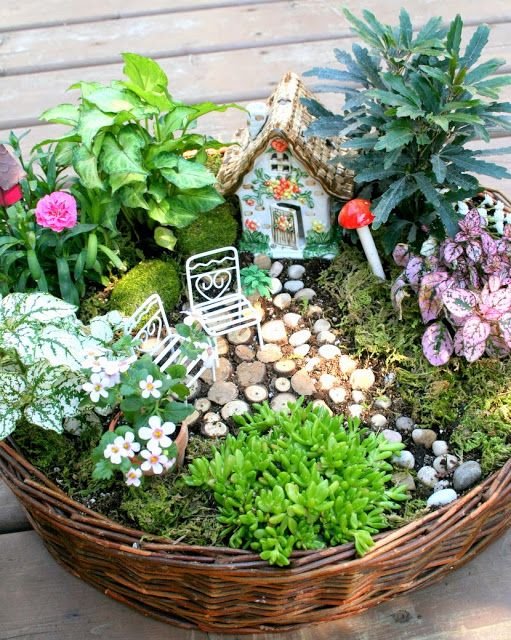Here’s your guide of how to make fairy garden. Fairy gardens bring a touch of magic to any garden space, inviting imagination and creativity to bloom alongside your plants. These miniature landscapes, complete with tiny houses, plants, and accessories, are a delightful project for gardeners of all ages. In this blog post, we’ll explore the steps to create your own fairy garden, from selecting the right container to choosing the perfect plants and accessories.
What is a Fairy Garden?
A fairy garden is a small, themed garden designed to attract fairies, sprites, or other whimsical creatures. Typically set in containers, they can also be incorporated into larger garden beds. Fairy gardens often include tiny furniture, fairy houses, miniature pathways, and plants scaled to fit the tiny landscape.

Choosing Your Container
The first step in creating a fairy garden is selecting the right container. Here are some ideas:
- Planters and Pots: Terra cotta, ceramic, or plastic pots of various sizes can serve as the base for your fairy garden.
- Repurposed Items: Old wheelbarrows, broken pots, birdbaths, or even teacups can make unique and charming containers.
- Wooden Boxes: Small wooden crates or boxes can be lined with plastic to hold soil and plants.

Selecting Plants
When choosing plants for your fairy garden, consider their scale, growth habits, and care requirements. Here are some ideal plant choices:
- Miniature Plants: Look for dwarf or miniature varieties of popular plants. Miniature roses, dwarf conifers, and small-leafed ivy are good options.
- Ground Covers: Moss, creeping thyme, and baby tears create a lush, carpet-like effect.
- Succulents: Small succulents like hens-and-chicks and tiny echeverias are easy to care for and add interesting textures.
- Herbs: Miniature herbs such as dwarf lavender, tiny basil, and small-leaved oregano add fragrance and a touch of realism.

Designing Your Fairy Garden
Designing your fairy garden involves creating a miniature landscape that tells a story. Here are some elements to consider:
- Fairy Houses: Tiny houses can be purchased or made from natural materials like twigs, bark, and stones. Position the house as the focal point of your garden.
- Pathways and Walkways: Use pebbles, crushed shells, or small pieces of bark to create pathways. These can wind through the garden, leading to the fairy house or other features.
- Furniture and Accessories: Miniature benches, arbors, birdbaths, and garden tools add charm and detail. Look for items in craft stores or make your own.
- Water Features: Small mirrors or shallow dishes filled with water can mimic ponds or streams.

Assembling Your Fairy Garden
- Prepare the Container: Ensure your container has drainage holes to prevent water-logging. Add a layer of gravel or small stones at the bottom for additional drainage.
- Add Soil: Fill the container with a well-draining potting mix, leaving enough space to add your plants and accessories.
- Plant Selection and Placement: Arrange your plants in the container, considering their mature size and growth habits. Place taller plants towards the back and ground covers or small plants at the front.
- Add Accessories: Once your plants are in place, add your fairy house, pathways, and other accessories. Use small rocks, twigs, and moss to create a natural look.
- Water and Care: Water your fairy garden lightly, ensuring the soil remains moist but not waterlogged. Place your garden in a location that receives the appropriate amount of light for your chosen plants.

Maintaining Your Fairy Garden
Fairy gardens require regular care to keep them looking their best:
- Watering: Check the soil moisture regularly and water as needed. Be mindful not to overwater, especially if your container has limited drainage.
- Pruning: Trim any overgrown plants to maintain the miniature scale of your garden.
- Seasonal Care: Bring your fairy garden indoors during extreme weather conditions, especially if you have used tender plants that are not frost-hardy.
- Refreshing Accessories: Update your fairy garden with new accessories or rearrange the layout to keep it fresh and interesting.

Conclusion
Creating a fairy garden is a delightful way to bring a touch of whimsy and imagination to your gardening endeavors. Whether you are an experienced gardener or a beginner, designing and maintaining a miniature landscape offers endless opportunities for creativity and fun. So gather your plants, accessories, and a bit of fairy dust, and start crafting your own magical world today!

